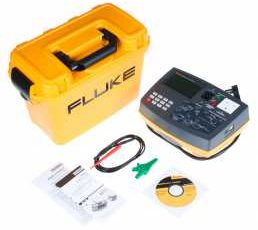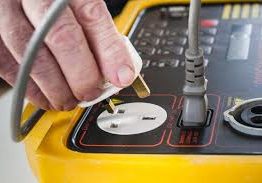- HOME
- ABOUT US
- APPROVALS
- JOBS
- OUR SERVICES
- INSPECTION
- TRAINING
- CONSULTANCY
- IOSH
- PERSONAL CERTIFICATION
- MY FILES
- CONTACT US
- HOME
- ABOUT US
- APPROVALS
- JOBS
- OUR SERVICES
- INSPECTION
- TRAINING
- CONSULTANCY
- IOSH
- PERSONAL CERTIFICATION
- MY FILES
- CONTACT US
© 2025 BSAFE SAFETY. Created for free using WordPress and Kubio
B Safe Safety & Security Consultancy
PAT(Portable Appliance Testing)
What
is PAT(Portable Appliance Testing)?
Portable Appliance Testing, more
commonly known as “PAT”, “PAT Inspection”, and “PAT TESTING”, is the term used
to describe process of the periodical in-service inspection and testing of electrical
appliances and equipment, to ensure that they are safe to use.
Here, at B Safe Safety, PAT is
carried out by qualified engineers, trained to perform not only the electrical
test, but to conduct a visual examination of every equipment as well as provide
the risk assessment for the environment of which the tool is going to be used
in.
It is important for all of these
three parameters to be conducted during the PAT test, (electrical testing,
visual testing, risk assessment).
·
Electrical
tests: earth resistance test, earth continuity test,
insulation resistance test, leakage test, polarity check, RCDs / ELCBs / Safety
Switches.
·
Visual
tests: it is essential part of the PAT
process, as some electrical safety defects cannot be detected with electrical testing
alone, checking the cable, the wires, and the plug for any signs of damage and
none compliance is carried out at every PAT session.
·
Risk
assessment: the engineers carrying out the
PAT process will assess both the equipment and the site for any potential
risks, to ensure that the equipment is within the appropriate environment
according to the manufacturer specifications, as well as the proper tests are
conducted for each specific equipment (in a grinder, a leakage current test
would power up the appliance, hence an insulation resistance test would be a
safer option.)
Why is
PAT important?
It is
the employers’ responsibility to ensure the safety of electrical equipment
present at the site, so long that those equipment are accessible to the
employees or the public, PAT is done to help prevent accidents as well as avoid
any unnecessary liability in case of one.
Having
PAT records ready at the site is a great way to ensure that the quality
assurance, HSE requirements, and insurance documents are complied with.
Regular
PAT for all critical electrical equipment will ensure the safety of the workers
and the public, as well as the employer and business owner.
What needs to be PAT
Tested?
Any
appliance that has a cord and a plug that is intended to connect to a wall
socket or generator requires PAT testing.
If an
appliance is cordless, the tool itself shall not have a PAT test, however,
their battery chargers that plugs into the wall would require a PAT test.
This
means that all electrical equipment should be tested, PAT is done to ensure the
safety of the equipment for the user, as electrical shock from any source could
be fatal.
Documentation & Reporting.
Upon the
completion of the PAT test, an initial test report will be issued, providing
detailed information for all appliances tested, as well as the tests performed,
the result obtained, and the final conclusion from the PAT test, whether the
equipment is safe to use or not.
Later on
a safety certificate will be issued carrying the B Safe Safety stamp, our
certificates and initial reports are made to be easy to understand, simplicity
and accuracy are our aim when it comes to certification and documentation.
B Safe
Safety is an authorized body for analysis, inspection, and certification
services in UAE.
Booking and inquires.
Here at
B Safe Safety, we ensure the safety of the equipment undertaking the PAT test,
we adhere to local requirements and regulations without compromising our
thought out flexibility, what makes us unique is the deep understanding of our
qualified engineers conducting the PAT test, we are capable of maintaining the
safety of the equipment and users, and able to provide solutions and in case of
any problems found during the inspection.
We are
known for our competitive pricing, flexible scheduling, and punctual timings,
for any requests or inquires do not hesitate to contact us.
© 2025 BSAFE SAFETY. Created for free using WordPress and Kubio


